Resources
 Part of the Oxford Instruments Group
Part of the Oxford Instruments Group
Expand
Collapse
 Part of the Oxford Instruments Group
Part of the Oxford Instruments Group
Raman spectroscopy is a powerful tool to interrogate biological and material systems, as Raman spectra provide a chemical specificity that can be used to monitor chemical reactions, identify molecular structures, and measure the distribution of chemical species throughout a sample. The development of novel Raman methods has, in part, been enabled through development in detector technologies. Here we discuss the application of a scientific Complementary Metal Oxide Semiconductor (sCMOS) camera as a detection solution for Raman spectroscopy. Whereas CCD cameras have traditionally found popularity in experimental Raman set ups, the readout architecture of sCMOS cameras provides an attractive detector platform for fast Raman spectroscopy and can outperform CCDs under certain experimental conditions. We highlight the advantages of sCMOS and CCD detectors for Raman spectroscopy, and spectroscopy more generally, using a dual output spectrometer to ensure an equivalent optical set up for both cameras.
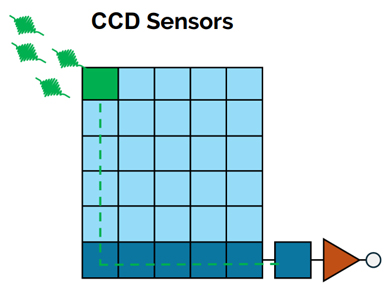
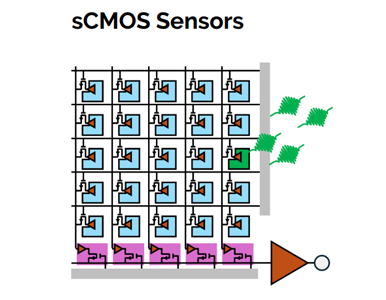
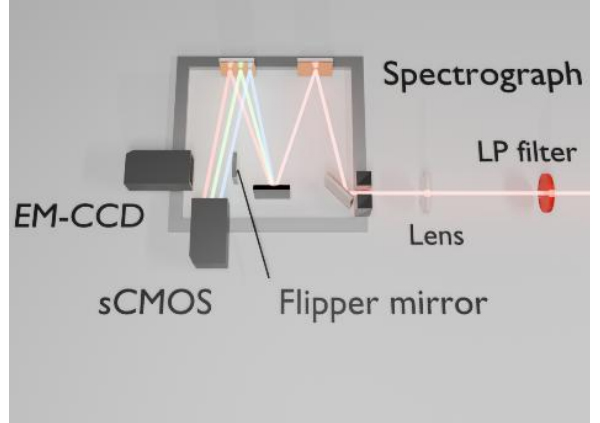
1. Kymera 193 dual output spectrograph
2. Shamrock 300i spectrograph
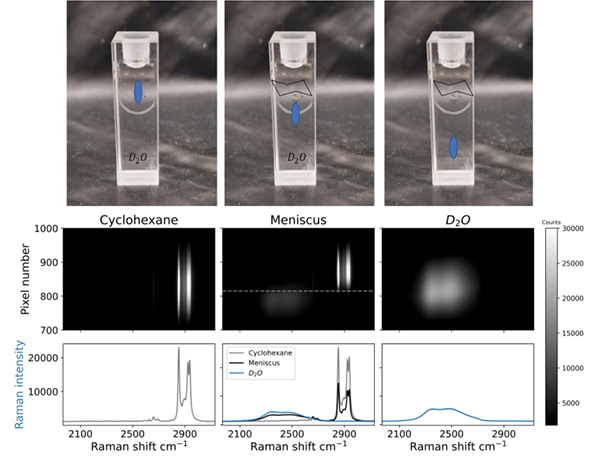
The individual pixel readout architecture of sCMOS cameras reduces artifacts (e.x. smearing, blooming), lending it to high fidelity imaging experiments. This is demonstrated by Raman spectral images of a biphasic system and mixing in a microfluidic system.
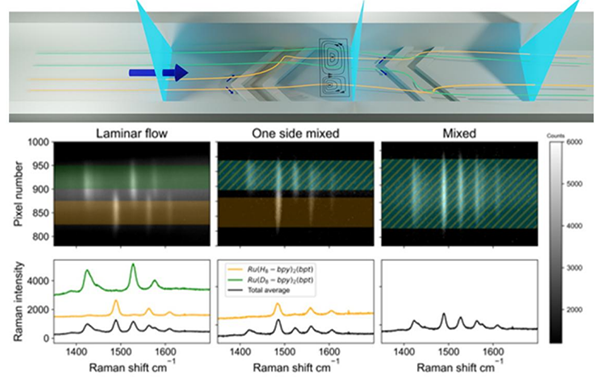
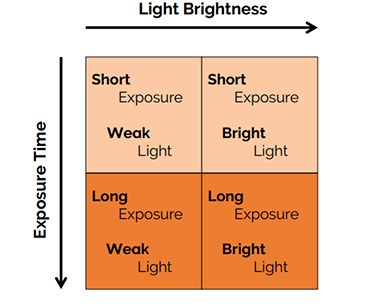
Given a particular experimental system the proper camera could be a conventional CCD, EMCCD or sCMOS camera
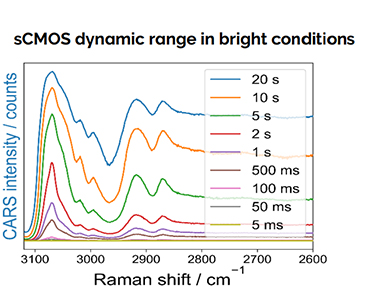
High dynamic range of sCMOS cameras preserves weak spectral features in long exposures under bright conditions.
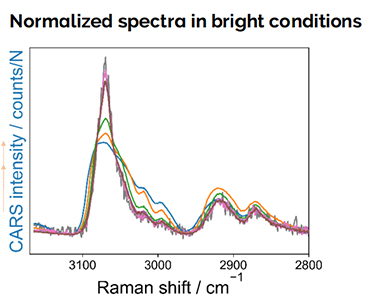
Spectra to left after normalization to integrated peak area.
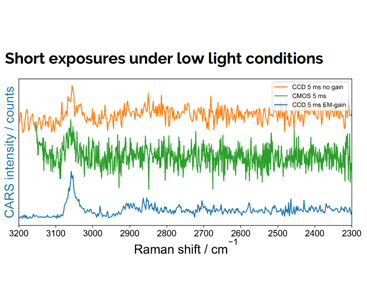
CARS spectra of PS (1064 pump, reduced power) recorded with a 5 ms exposure time. EMCCD excels at reduced photon fluences.
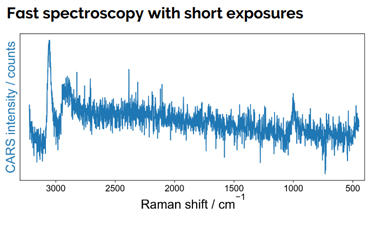
CARS spectra of PS (1064 pump) recorded with a 980 us exposure time, faster than the achievable rate using a CCD
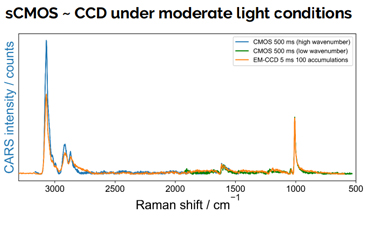
CARS spectra of PS (1064 pump) of recorded under moderate light conditions. Performance of sCMOS and CCD are comparable with similar noise levels..
The performance of sCMOS cameras for spectroscopy applications has been explored and contrasted where appropriate with CCD cameras. In a weak signal regime CCD technology can hold an advantage. At moderate photon fluxes, the relatively small performance difference in conjunction with additional technological advantages are a clear indicator sCMOS cameras can readily be considered for spectroscopy applications. Moving towards high photon fluxes, sCMOS cameras can already outperform standard CCD detectors and hold a significant advantage for fast-spectroscopy applications.
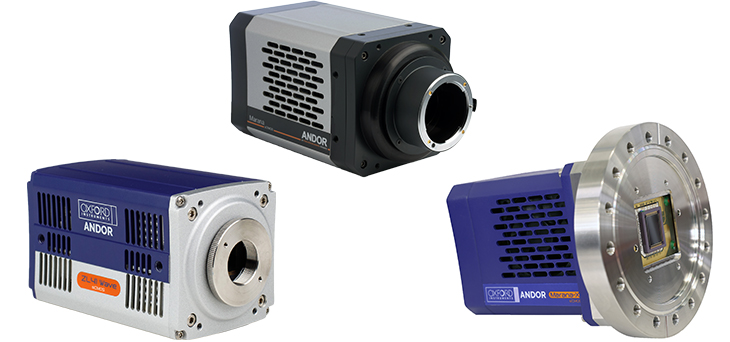
W.J.N. Klement, P. Leproux, W.R. Browne, H. Kano, CMOS and CCD detection in Raman spectroscopy: a comparison using spontaneous and multiplex coherent anti-Stokes Raman scattering (CARS), ChemRxiv, 2024, DOI: 10.26434/chemrxiv-2024-vqjlz
W.J.N. Klement, E. Savino, W.R. Browne, E. Verpoorte, In-line Raman imaging of mixing by herringbone grooves in microfluidic channels, Lab Chip, 2024, 24, 3498-3507, DOI: 10.1039/D4LC00115J
W.J.N Klement, S. Verpoorte, W.R. Browne, Seeing Mixing in Microfluidic Channels with Line Focused Raman Imaging, Andor Learning Center, 2024
The authors would like to thank Phillipe Leproux and Buillaume Huss (Leukos) for their assistance with data collection. This work was funded, in part, by the Ubbo Emmius fund of the University of Groningen.
Date: January 2025
Author: Andrew Carpenter and Niels Klement
Category: Application Note
